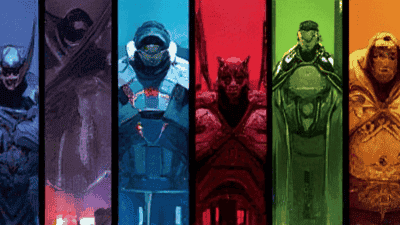
Role-playing games (RPGs) offer vast, immersive worlds where player choices shape epic sagas. While often perceived as straightforward adventures, beneath the surface lies a complex tapestry of mechanics demanding strategic acumen. Many players focus on grinding levels or acquiring rare gear, overlooking fundamental principles that truly differentiate a champion from a casual participant. This article delves into five game-changing strategies, transforming seemingly simple gameplay into a profound understanding of victory.
The evolution of role-playing games, from their tabletop origins to today's sprawling digital landscapes, has continuously deepened the strategic layer required for true mastery. Understanding core gameplay strategies isn't merely about winning; it's about optimizing resource allocation, crafting synergistic character builds, and adapting to dynamic combat scenarios. These principles are invaluable for both the casual adventurer seeking a smoother journey and the hardcore player striving for optimal performance in raid encounters or player-versus-player (PvP) arenas. In the ever-evolving RPG landscape, with its increasingly complex systems and community-driven meta-games, debates often rage about the "best" approaches—whether it's raw damage output versus utility, or the purity of role-playing against efficient "min-maxing." These underlying strategies are crucial to navigate such discussions and truly appreciate game design. What impact would it have on our understanding or practice of these immersive worlds if we failed to fully comprehend these fundamental strategic pillars?
Mastering Your Arsenal
Strategic Resource Allocation for Sustained Dominance
Resource management is the bedrock of sustained success in any role-playing game. It encompasses the intelligent allocation and conservation of all consumable elements crucial to your character's survival and effectiveness. This includes not only obvious metrics like Health Points (HP), Magic Points (MP), or stamina but also extends to inventory space, consumable items (e.g., potions, scrolls), equipment durability, skill cooldowns, and even in-game currency. The core mechanism involves making judicious trade-offs: when to spend and when to save. For instance, in Diablo series, knowing when to pop a healing potion versus relying on passive regeneration can be the difference between clearing a challenging dungeon and facing a costly defeat. Similarly, games inspired by Dungeons & Dragons often feature limited spell slots, forcing casters to plan their magical expenditures across multiple encounters. Elden Ring presents a prime example where stamina is a universal resource governing attacks, dodges, and sprints; mismanaging it leaves a player vulnerable and unable to react. Effective resource management minimizes downtime, maximizes efficiency in combat, and ensures you always have the necessary tools to overcome the next obstacle. It's akin to a general carefully rationing supplies for a long campaign, ensuring the army never runs out of critical provisions at a pivotal moment. Understanding and optimizing this flow is essential for long-term viability and dominance.
Crafting the Perfect Warrior

Synergistic Character Development for Peak Performance
Build optimization refers to the meticulous process of designing and evolving a character to achieve peak performance in specific roles or overall versatility. This strategy goes beyond simply allocating stat points; it involves a holistic approach to character development, including stat distribution, skill tree progression, talent choices, equipment selection (weapons, armor, accessories), and even passive abilities. The primary goal is to create powerful synergies where individual components amplify each other, leading to an output far greater than the sum of its parts. This often involves extensive "theorycrafting" – analyzing game mechanics, calculating damage outputs, and simulating scenarios—followed by in-game testing to validate hypotheses. For example, a "tank" build in an MMORPG (Massively Multiplayer Online Role-Playing Game) might prioritize Strength and Vitality for high HP and defense, synergizing these with gear that boosts damage reduction and aggro generation skills. Conversely, a "glass cannon" Damage Per Second (DPS) build would focus on maximizing offensive stats like Intelligence or Dexterity, paired with critical hit chance and damage modifiers, often sacrificing defensive capabilities.
Consider how core attributes interact across various RPGs:
| Attribute | Primary Benefit (Example) | Secondary Benefit (Example) | Common Synergy |
|---|---|---|---|
| Strength | Melee Attack Damage | Encumbrance Limit | Heavy Armor Proficiency |
| Dexterity | Ranged Attack Damage | Evasion/Dodge Chance | Critical Hit Rate |
| Intelligence | Spell Damage/Mana Pool | Skill Cooldown Reduction | Elemental Affinities |
This table illustrates how a seemingly simple attribute like Strength isn't just about hitting harder; it often dictates your ability to carry more loot or wear better protective gear, leading to complex decision-making. Optimizing a build is an iterative process, constantly adapting to game updates, new gear, or evolving meta-strategies within the community. It's about engineering your character into a highly efficient machine designed for a specific purpose, whether it’s solo exploration, group raiding, or competitive player-versus-player combat.
Turning the Tides
Leveraging Terrain and Interactive Elements for Tactical Advantage
Environmental exploitation is the art of utilizing the game world itself as a strategic tool to gain an upper hand in combat or exploration. This strategy moves beyond character abilities and focuses on interacting with the surroundings in intelligent ways. The mechanisms include manipulating line of sight (LoS) to break enemy targeting or create ambushes, using cover to reduce incoming damage, or funneling enemies through choke points to control their numbers. It also involves activating environmental hazards (e.g., poisonous gas traps, collapsing structures) or interacting with specific objects (e.g., exploding barrels, activatable switches) to inflict damage, apply crowd control, or open new paths. For instance, in Divinity: Original Sin 2, players can electrify water puddles to stun enemies or set oil slicks ablaze for massive area damage. Similarly, in many stealth-focused RPGs, hiding in tall grass or behind obstacles allows for surprise attacks or bypassing dangerous encounters entirely. Pushing enemies off cliffs or into lava pits, a classic tactic in games like Dark Souls or Baldur's Gate 3, demonstrates how environmental hazards can be lethal tools. This approach transforms the battlefield from a mere backdrop into an active component of your strategy, rewarding observant and creative players who think beyond their hotbar abilities.
Conclusion

This exploration has highlighted three pivotal game-changing strategies essential for dominating any role-playing game: masterful Resource Management, meticulous Build Optimization, and astute Environmental Exploitation. We've seen how effectively managing vital assets like Health Points, Magic Points, and item cooldowns ensures sustained operational capacity, transforming potential defeats into continuous progress. Furthermore, the deliberate synergy inherent in Build Optimization, where character attributes, skills, and equipment coalesce, crafts a highly specialized and potent avatar capable of excelling in specific roles or adapting to diverse challenges. Finally, understanding and leveraging the game environment—from utilizing cover and choke points to exploiting elemental hazards—reveals a layer of tactical depth that transcends brute force. These core strategies collectively represent more than mere tips; they are fundamental pillars of strategic thinking that profoundly deepen player engagement and elevate the entire gaming experience. By internalizing these principles, players move beyond reactionary gameplay, evolving into architects of victory who not only win but truly master their chosen digital realms. This comprehensive approach unlocks the full potential of any RPG adventure, ensuring a more rewarding and successful journey.
Looking ahead, the landscape of RPG strategies is poised for continuous evolution, driven by technological advancements and shifting player expectations. Future trends may see more sophisticated artificial intelligence companions demanding nuanced coordination, or procedurally generated worlds creating unpredictable tactical scenarios. Breakthroughs in adaptive game design could introduce dynamically changing enemy behaviors or environmental factors that necessitate real-time strategic shifts, challenging even the most optimized builds. The impact of macro-level design policies, such as developer patch cycles that rebalance skills or introduce new content, will continually shape the optimal meta-game, requiring players to constantly re-evaluate their approaches. Interdisciplinary integration, perhaps drawing from real-world military tactics or economic theory, could further enrich strategic depth. The primary challenge remains balancing this increasing complexity with accessibility, ensuring that new players aren't overwhelmed while veterans find endless avenues for mastery. Continuous research and experimentation within player communities will be vital, fostering new theorycrafting and sharing innovative tactics. The future of dominating RPGs lies in embracing this ongoing evolution, demonstrating an adaptive mindset that prioritizes learning and critical thinking as much as skill execution.
Frequently Asked Questions (FAQ)
Q: What exactly is "meta-gaming" in the context of RPGs, and why does it often spark debate within player communities? A: "Meta-gaming" refers to the act of using out-of-character or out-of-game knowledge to influence in-game decisions. This knowledge can come from various sources: reading wikis and guides, watching streamers, analyzing game patch notes, understanding game mechanics beyond what's presented in character, or even knowing specifics about future content. At its core, meta-gaming is about optimizing performance and achieving objectives as efficiently as possible, leveraging all available information. For example, knowing a boss's exact weaknesses from an online guide before encountering them in-game, or choosing a character build that is known to be "overpowered" in the current game version based on community consensus, are forms of meta-gaming.
While incredibly effective for mastering challenges, maximizing damage, or speedrunning, meta-gaming often sparks controversy. Critics argue that it can diminish the immersion and role-playing aspect of an RPG. If a player always picks the objectively "best" option, regardless of their character's personality or the narrative context, it can feel less like playing a unique role and more like solving a puzzle. It can also lead to a homogenous "meta" where only a few optimal builds or strategies are considered viable, stifling creativity and discouraging experimentation with less efficient but potentially more interesting playstyles. For many, the joy of an RPG lies in discovery and emergent storytelling, which meta-gaming, in its most extreme forms, can undermine by pre-solving challenges and stripping away the element of surprise.
Q: How can players effectively balance the pursuit of "fun" with the drive for "optimization" when developing strategies for their RPG characters? A: Balancing "fun" and "optimization" is a perennial question in the RPG community, as what constitutes "fun" is highly subjective. For some players, the enjoyment is in the optimization—the thrill of min-maxing, perfecting a build, or overcoming the hardest content with peak efficiency. For others, fun comes from narrative immersion, role-playing a unique character, exploring unconventional builds, or simply experiencing the world at their own pace without stress over optimal performance. The key is to define your personal goals for the game.
Firstly, recognize that you don't always need absolute top-tier optimization for most content. Many games are designed to be enjoyable and completable with a variety of viable strategies. You might achieve 80% of the optimization with 20% of the effort, leaving plenty of room for character choices that align with your personal preferences or role-playing desires. Perhaps you want to play a fire mage, even if ice mages are currently "meta"; you can still optimize your fire build within that chosen theme. Secondly, consider "hybrid" approaches. You can build a character that is mechanically strong enough to handle challenges while still embodying a unique concept. This often involves identifying core synergistic elements for your chosen playstyle and then fleshing out the rest with choices that bring you joy. Finally, remember that it's a game. If a particular optimization strategy drains your enjoyment, it's counterproductive. Experiment, communicate with other players, and don't be afraid to deviate from the "best" path if it leads to a more engaging and fulfilling personal adventure.








